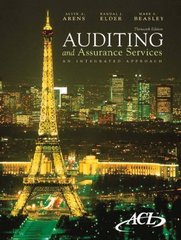


Problem 7. In this exercise, we study the-probability of use of English letters. We take an article written by Feynman as our data. The article is entitled. "There's Plenty of Room at the Bottom". The article is downloadable at the class webpage, in the Homework section. There is also a MATLAB function readtxt.m that is useful. (a) Use the function provided to read the article into MATLAB, keeping only the letters. (b) Estimate the probabilities (frequencies) that the 26 letters are used. (c) Estimate the probabilities of the 26 letters after a letter B. (d) Estimate the probabilities of the 26 letters after letters Q. (e) Based on the estimates, decide whether two consecutive letters are independent. Note: The MATLAB function find will find indices that satisfy a certain criterion. For example, find (A==B) will find the indices of elements in matrix A that are equal to the character 'B'. END OF ASSIGNMENT \% FUNCITON A=READTXT ('file.txt') \% \% Read the characters in file.txt, convert all letters to upper % case and keep only 26 letters. A is a one-dimensional array containing % all the characters in the order they are used. function A=readtxt ( filename); % open the file [fid, message] = fopen(filename, 'r'); if fid =1 fprintf('File \%s could not be openedin', filename); error(message); return; \% read the chars A=fscanf(fid, '\%s'); \% remove non-letters and convert to upper case Amupper(A(find(istetter(A)))); \% close the file There's Plenty of Room at the Bottom I imagine experimental physicista must often 100k with envy at men 11ke Kameriingh Onnes, who discovered a field like low temperature, which aeems to be botcomless and in which one can go down and down. Such a man is then a leader and has some temporary monopoly in a scientific adventure. Percy Bridgman, 1 n deaigning a way to obtain higher presaures, opened up another new field and was able to move into it and to lead us all along. The development of ever higher vacuum was a continuing development of the same k ind. I would 11 ke to deacribe a field, in which 11 ttle has bee done, but in which an enormous amount can be done in principle. This tield is not quite the same as the others in that 1t will not tel1 us much of fundamental physics (in the sense of, "What are the strange particles?'i) but it 1s more like solid-state physics in the eense that it might teli us much of great interest about the atrange phenomena that occur in complex aituations. Furthermore, a point that is most important 1s that it would have an enormous number of technical applications. What I want to talk about is the problem of manipulating and controling things on a mall scale. As soon as I mention thia, people tel1 me about miniaturization, and how far it has progressed today. They tel1 me about electric motors chat are the size of the nail on your ma11 finger. And there 1s a device on the market, they tell me, by which you can write the Lord's Prayer on the head of a pin. But that's nothing; that's the most primitive, halting step in the direction I intend, to di gcuss. It 19 a staggeringly small world that is below. In the year 2000 , when they 100k back at this age, they w111 wonder why it was not unt11 the year 1960 that anybody began aeriously to move in this direction. Why cannot we write the entire 24 volumes of the Encyolopedia Brittanica on the head of a pin? Let's see what would be involved. The head of a pin is a sixceench of an inch acrogs. If you magnify 1t by 25,000 dianeters, the area of the head of the pin is chen equal to the area of all the pages of the Encyolopaedia Brictanica. Therefore, al1 it 15 necesary to do 13 to reduce in gize al1 che writing in the Encyclopaedia by 25,000 tines. Is that posaible? The resolving power of the eye 1s about 1/120 of an inch---chat is roughiy the diameter of one of the 11ttle dots on che fine half-tone reproduotiong in the Encyclopaedia. This, when you demagnify it by 25,000 times, is sti11 80 angstrons in diameter--32 acoms across, in an ordinary metal. In ocher words, one of choge doca at111 would contain in ite'area 1,000 atons. So, each dot can easily be adjusted in size as required by the photoengraving, and there 13 no quegtion that there 18 enough room on the head of a pin to put all of the Encyclopaedia Brittanica










